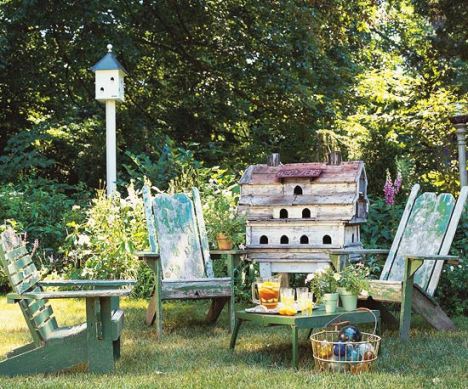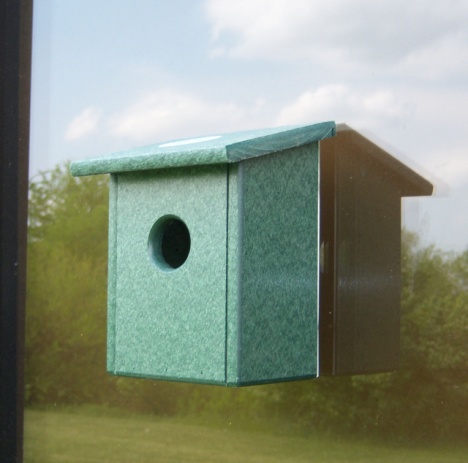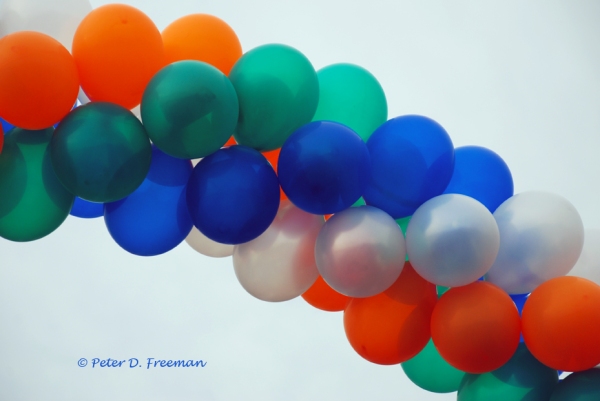Filed under: Bird Feeding | Leave a comment »
THE FOCAL POINT
With a thick, green carpet of luscious, fertile lawn, you can draw attention to it by putting the bird feeder near the center as the shining jewel of the landscape. A circle of potted annuals or perennials placed around the base of the feeder add a splash of color. Surround the bird feeder with curved stone or wooden garden benches. Space two to four benches out around the feeder evenly, placing them at least 6 feet away so that you won’t scare off the birds by sitting on them.
Filed under: Bird Feeding | 1 Comment »
THE RIGHT LANDSCAPING CAN ATTRACT MORE BIRDS TO YOUR YARD
Bird feeders are a great first step, but there are birds you may be missing out on because they are not seed or nectar eating birds. Many types of birds prefer to eat berries, fruit and insects. You can reach these birds by creating a more bird-friendly backyard.
A bird feeder makes an attractive ornamental feature for your garden, bringing you hours of delight as you sit and enjoy the company of your feathered visitors. Plan the landscape around it to ensure it enhances, rather than detracts, from the style and flow of your property.
For a formal look in your yard, put your bird feeder right in the center of your yard. One effective way to display it prominently is to have paths radiating outward from it, with low-growing herbs or perennials planted between the paths. This style is reminiscent of formal European gardens that focus on geometric shapes, straight borders, paths and decorative elements such as fountains, sundials or statuary. Placing your feeder like this gives the landscape a sense of order and grandeur.
If you prefer your yard or garden to reflect the wild, rustic charm of the natural cottage garden style, designate a corner for your bird feeder. Place tall plants, such as jasmine or wisteria behind the feeder. Around and in front of the feeder, plant an assortment of perennials and foliage, such as coneflowers, lantanas, ferns or coleus. The bird feeder should seemingly emerge out of the cluster of assorted growth, as if it had been forgotten in an area where the wild took over and grew around it.
Filed under: Bird Feeding | 1 Comment »
Recycled Plastic Eco-friendly Nest View Bird House!
It’s nest-building time! Watch birds build their nest and raise their young this spring. Clear panel for great view. Entrance hole measures 1 1/2 inch.
Filed under: Bird Feeding | Leave a comment »
Why Feed the Birds in the Winter?
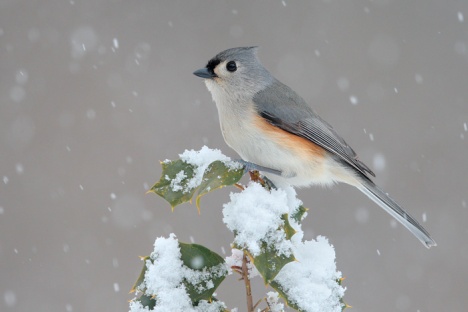
Spring is around the corner, but many people overlook the importance of feeding the birds during the cold months. Winter is a hard season, but many people think that wild birds manage just fine, no matter how nasty it is outside. After all, aren’t wild birds supposed to be out in the cold and snow? They are, but it’s not easy for them. A bird’s survival can be a struggle, but winter can be harsh, increasing the bird’s vulnerability. Their metabolism is fragile to the winter environment. Sufficient food is vital, but is it entirely up to them to survive each winter?
Many people tend to feed birds in the summer months, but providing birds with food, water and shelter can really help them during the winter and make your garden a haven for all wildlife to enjoy. Making sure they are properly fed gives them heat during cold periods and energy for the breeding season. Many birds have to spend a large portion of their waking hours eating because the days are short. Most people don’t realize the great disadvantage of feeding at this time of year. During the warm summer months, birds should be instinctively busy cleaning the air of trillions of insects, as well as eating seeds that bud in the weeds. The more the birds are distracted from their natural food sources, the greater the number of insects and the more fruit and weed seeds that will go to waste. If fed in summer, the birds may even ignore their natural food sources.
During the winter months, birds often struggle. The cold days are a lot to endure, and the long, cold nights pose greater harm and stress. The natural summer and fall food supply has either been eaten or has died or frozen. Also, insects have passed on a new generation of larvae inactive until spring. Foraging can be especially hard for birds during days of extremely cold temperatures. It may not be as much fun for the person doing the bird feeding in the winter when the temperatures become harsh, but it is well worth it. The birds will almost instantly show their appreciation by flocking to the feeders and putting on a show. Water is also still crucial to provide to birds in cold weather. In northern climates the bird baths often will stay frozen, but there are inexpensive bird bath heaters available for just that purpose.
The birds don’t care how basic or elaborate their feeders are, they only care what’s in them. Many birds that visit backyard feeding stations are seed eaters, and even insect eaters will begin eating more seeds to replenish their diets since insects are harder to find. By far, the best seed to feed the largest variety of birds is the black-oil sunflower seed. If only one bird seed could be purchased, this is the one to buy. These are less expensive than the grayish color sunflower seeds for people, but they also have a higher oil content making them a better choice for the birds. The extra oil in their diet helps them to combat the cold weather. This seed is a favorite of chickadees, titmice, cardinals, woodpeckers, finches, and many others.
If you live where winters are long and cold, you know what it feels like to be cooped up for days. Watching the different kinds of birds visiting your feeders can keep you entertained for hours. Nature Centers have big picture windows where people can watch birds eating. They’re popular attractions. You can put on your own show with your own feeders. Maybe you’ll even see a rare bird drop by for a visit. Also, many people feel that they’re doing their part to help nature when they put out bird feeders. In fact, sales of bird food often go up just before winter storms. No matter your reason for feeding birds, they certainly appreciate it. Enjoy their company and their songs whether it’s winter or spring. It’s so delightful to watch them and it can also relieve stress. So take time to feed your birds!
Filed under: Bird Feeding, Birds | Leave a comment »
Take a window seat and enjoy nature at it’s best!
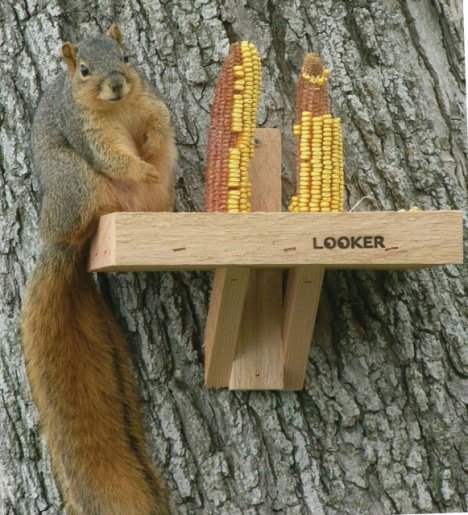
The fox squirrel is one of four squirrel species in Ohio; gray, red, and flying squirrels are the other three. Of the four, the fox squirrel is the largest. Fox squirrels were not originally inhabitants of Ohio. The extensive, heavily wooded forest of pre-settlement Ohio was not their preferred habitat. Only when settlement cleared some of the dense woods away and provided open areas and fewer dense woodlots did the fox squirrel start to make Ohio home, moving into the area from the geographical Midwest prairie edge.
Although they’re pesky creatures, they sure are cute…and fun to watch bounding through the yard! We perch these feeders far enough away from our bird feeders. This keeps the squirrels occupied and soon, they forget to raid the birdseed.
Check these feeders out today! Free shipping in March at http://www.birdfeederauthority.com/Home.html
Filed under: Bird Feeding | Leave a comment »
Lottie Bulbs
Mine are all blooming! Spring is almost here!
A mid-February walk around our lottie site on a dull grey day was much improved by the colour of the earliest bulbs. Each autumn we invite donations of bulbs from members and now we are seeing and appreciating the results of our members’ efforts.
We grow lots of these early bulbs as they provide very early pollen for any bees that come out on mild days. We need to look after our bee friends as they help pollinate our fruit, peas and beans and many more crops.
The gold of crocuses (or should that be croci or perhaps simply just crocus?) brightens the orchard meadow.
Snowdrops and Winter Aconites go together like chalk and cheese. Together they light up the Winter Garden.
Even in the Summer Garden spring bulbs have a place. These beautiful blue iris cheer everyone up as they pass by.
The tiniest and most delicate flowers of February are those…
View original post 82 more words
Filed under: Bird Feeding | 1 Comment »
Balloon Arch
Awesome!
Filed under: Bird Feeding | Leave a comment »
Just listen
Did you ever walk outside in March and just listen to the birds?
The ground may still be covered with snow, but there is a “Spring Sound” in the air! The Chickadees have a happy chirp that is different than their call in wintertime.
When my son David was little, he asked one spring day, what the Chickadees were saying. I said, “They’re singing, Daaaaaviiid, it’s spriiiingtiiiime!” and everytime I hear that song now, it brings a smile to my face. It just sounds like spring. It gives me hope that warmer weather is coming!
The robins too, are beginning to frequent my backyard. The snow-less spots in the yard are warmed by the sun. This brings the worms to the surface, a banquet for the robins. Their movements throughout the yard are in preparation for nesting, and their songs are in anticipation of just that.
Ahh, spring! It’s almost here! Be patient, and listen…..
Filed under: Bird Feeding | 1 Comment »



